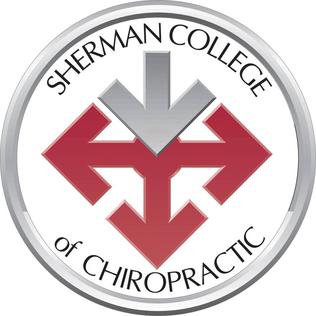The following outline is provided as an overview of and topical guide to health sciences:
A mental disorder, also called a mental illness or psychiatric disorder, is a behavioral or mental pattern that causes significant distress or impairment of personal functioning. Such features may be persistent, relapsing and remitting, or occur as a single episode. Many disorders have been described, with signs and symptoms that vary widely between specific disorders. Such disorders may be diagnosed by a mental health professional.
Gender dysphoria (GD) is the distress a person feels due to a mismatch between their gender identity and their sex assigned at birth. The diagnostic label gender identity disorder (GID) was used until 2013 with the release of the DSM-5. The condition was renamed to remove the stigma associated with the term disorder.

Pneumonia is an inflammatory condition of the lung primarily affecting the small air sacs known as alveoli. Symptoms typically include some combination of productive or dry cough, chest pain, fever and difficulty breathing. The severity of the condition is variable.

Borderline personality disorder (BPD), also known as emotionally unstable personality disorder (EUPD) or borderline pattern personality disorder is a personality disorder characterized by a long-term pattern of unstable relationships, distorted sense of self, and strong emotional reactions. Those affected often engage in self-harm and other dangerous behavior. They may also struggle with a feeling of emptiness, fear of abandonment, and detachment from reality. Symptoms of BPD may be triggered by events considered normal to others. BPD typically begins by early adulthood and occurs across a variety of situations. Substance abuse, depression, and eating disorders are commonly associated with BPD. Approximately 10% of people affected with the disorder die by suicide. The disorder is often stigmatized in both the media and the psychiatric field.
Schizoaffective disorder is a mental disorder characterized by abnormal thought processes and an unstable mood. The diagnosis is made when the person has symptoms of both schizophrenia and a mood disorder—either bipolar disorder or depression. The main criterion for the schizoaffective disorder diagnosis is the presence of psychotic symptoms for at least two weeks without any mood symptoms present. Schizoaffective disorder can often be misdiagnosed when the correct diagnosis may be psychotic depression, psychotic bipolar disorder, schizophreniform disorder, or schizophrenia. It is imperative for providers to accurately diagnose patients, as treatment and prognosis differs greatly for each of these diagnoses.

In epidemiology, an outbreak is a sudden increase in occurrences of a disease in a particular time and place. It may affect a small and localized group or impact upon thousands of people across an entire continent. Four linked cases of a rare infectious disease may be sufficient to constitute an outbreak. Outbreaks include epidemics, which term is normally only used for infectious diseases, as well as diseases with an environmental origin, such as a water or foodborne disease. They may affect a region in a country or a group of countries. Pandemics are near-global disease outbreaks when multiple countries across the world are infected.

The Doctor of Psychology (Psy.D) is a professional doctoral degree intended to prepare graduates for careers that apply scientific knowledge of psychology and deliver empirically based service to individuals, groups and organizations. Earning the degree was originally completed through one of two established training models for clinical psychology. However, Psy.D. programs are no longer limited to Clinical Psychology as several universities and professional schools have begun to award professional doctorates in Business Psychology, Organizational Development, Forensic Psychology, Counseling Psychology, and School Psychology.

Signs and symptoms are the observed or detectable signs, and experienced symptoms of an illness, injury, or condition. A sign for example may be a higher or lower temperature than normal, raised or lowered blood pressure or an abnormality showing on a medical scan. A symptom is something out of the ordinary that is experienced by an individual such as feeling feverish, a headache or other pain or pains in the body.
Prognosis is a medical term for predicting the likely or expected development of a disease, including whether the signs and symptoms will improve or worsen or remain stable over time; expectations of quality of life, such as the ability to carry out daily activities; the potential for complications and associated health issues; and the likelihood of survival. A prognosis is made on the basis of the normal course of the diagnosed disease, the individual's physical and mental condition, the available treatments, and additional factors. A complete prognosis includes the expected duration, function, and description of the course of the disease, such as progressive decline, intermittent crisis, or sudden, unpredictable crisis.
A nursing diagnosis may be part of the nursing process and is a clinical judgment about individual, family, or community experiences/responses to actual or potential health problems/life processes. Nursing diagnoses foster the nurse's independent practice compared to dependent interventions driven by physician's orders. Nursing diagnoses are developed based on data obtained during the nursing assessment. An problem-based nursing diagnosis presents a problem response present at time of assessment. Risk diagnoses represent vulnerabilities to potential problems, and health promotion diagnoses identify areas which can be enhanced to improve health. Whereas a medical diagnosis identifies a disorder, a nursing diagnosis identifies the unique ways in which individuals respond to health or life processes or crises. The nursing diagnostic process is unique among others. A nursing diagnosis integrates patient involvement, when possible, throughout the process. NANDA International (NANDA-I) is body of professionals that develops, researches and refines an official taxonomy of nursing diagnosis.
A medical specialty is a branch of medical practice that is focused on a defined group of patients, diseases, skills, or philosophy. Examples include children (paediatrics), cancer (oncology), laboratory medicine (pathology), or primary care. After completing medical school, physicians or surgeons usually further their medical education in a specific specialty of medicine by completing a multiple-year residency to become a specialist.

Screening, in medicine, is a strategy used to look for as-yet-unrecognised conditions or risk markers. This testing can be applied to individuals or to a whole population. The people tested may not exhibit any signs or symptoms of a disease, or they might exhibit only one or two symptoms, which by themselves do not indicate a definitive diagnosis.

Howard University Hospital, previously known as Freedmen's Hospital, is a major hospital located in Washington, D.C., built on the site of the previous Griffith Stadium. The hospital has served the African-American community in the area for over 150 years, having been established in 1862 to cater for the medical needs of the thousands of African Americans who came to Washington during the Civil War, seeking their freedom. The first hospital of its kind to provide medical treatment for former slaves, it later became the major hospital for the area's African American community.
Emotional and behavioral disorders refer to a disability classification used in educational settings that allows educational institutions to provide special education and related services to students who have displayed poor social and/or academic progress.

The University of North Carolina School of Medicine is a professional school within the University of North Carolina at Chapel Hill. It offers a Doctor of Medicine degree along with combined Doctor of Medicine / Doctor of Philosophy or Doctor of Medicine / Master of Public Health degrees.

Sherman College of Chiropractic is a private graduate college focused on the health sciences and located in Spartanburg, South Carolina. It was founded in 1973 and named after chiropractor Lyle Sherman. Sherman College offers the doctor of chiropractic degree. The college is home to approximately 450 students representing 42 states and 13 countries and has more than 3,000 alumni around the world. Sherman college supports the "straight" vertebral subluxation-based focus as different from diagnosis and symptomatic treatment focus of "mixed" U.S. chiropractic schools. The name of the college was changed to Sherman College of Straight Chiropractic the late 1970s, but changed back to the original name in 2009. Sherman College also has digital x-ray services in the Health Center for use of interns and local chiropractors.

Medical diagnosis is the process of determining which disease or condition explains a person's symptoms and signs. It is most often referred to as diagnosis with the medical context being implicit. The information required for diagnosis is typically collected from a history and physical examination of the person seeking medical care. Often, one or more diagnostic procedures, such as medical tests, are also done during the process. Sometimes posthumous diagnosis is considered a kind of medical diagnosis.

The affected community is composed of people who are living with HIV and AIDS, plus individuals whose lives are directly influenced by HIV infection. This originally was defined as young to middle aged adults who associate with being gay or bisexual men, and or injection drug users. HIV-affected community is a community that is affected directly or indirectly affected by HIV. These communities are usually influenced by HIV and undertake risky behaviours that lead to a higher chance of HIV infection. To date HIV infection is still one of the leading cause of deaths around the world with an estimate of 36.8 million people diagnosed with HIV by the end of 2017, but there can particular communities that are more vulnerable to HIV infection, these communities include certain races, gender, minorities, and disadvantaged communities. One of the most common communities at risk is the gay community as it is commonly transmitted through unsafe sex. The main factor that contributes to HIV infection within the gay/bisexual community is that gay men do not use protection when performing anal sex or other sexual activities which can lead to a higher risk of HIV infections. Another community will be people diagnosed with mental health issues, such as depression is one of the most common related mental illnesses associated with HIV infection. HIV testing is an essential role in reducing HIV infection within communities as it can lead to prevention and treatment of HIV infections but also helps with early diagnosis of HIV. Educating young people in a community with the knowledge of HIV prevention will be able to help decrease the prevalence within the community. As education is an important source for development in many areas. Research has shown that people more at risk for HIV are part of disenfranchised and inner city populations as drug use and sexually transmitted diseases(STDs) are more prevalent. People with mental illnesses that inhibit making decisions or overlook sexual tendencies are especially at risk for contracting HIV.
The PRECEDE–PROCEED model is a cost–benefit evaluation framework proposed in 1974 by Lawrence W. Green that can help health program planners, policy makers and other evaluators, analyze situations and design health programs efficiently. It provides a comprehensive structure for assessing health and quality of life needs, and for designing, implementing and evaluating health promotion and other public health programs to meet those needs. One purpose and guiding principle of the PRECEDE–PROCEED model is to direct initial attention to outcomes, rather than inputs. It guides planners through a process that starts with desired outcomes and then works backwards in the causal chain to identify a mix of strategies for achieving those objectives. A fundamental assumption of the model is the active participation of its intended audience — that is, that the participants ("consumers") will take an active part in defining their own problems, establishing their goals and developing their solutions.










